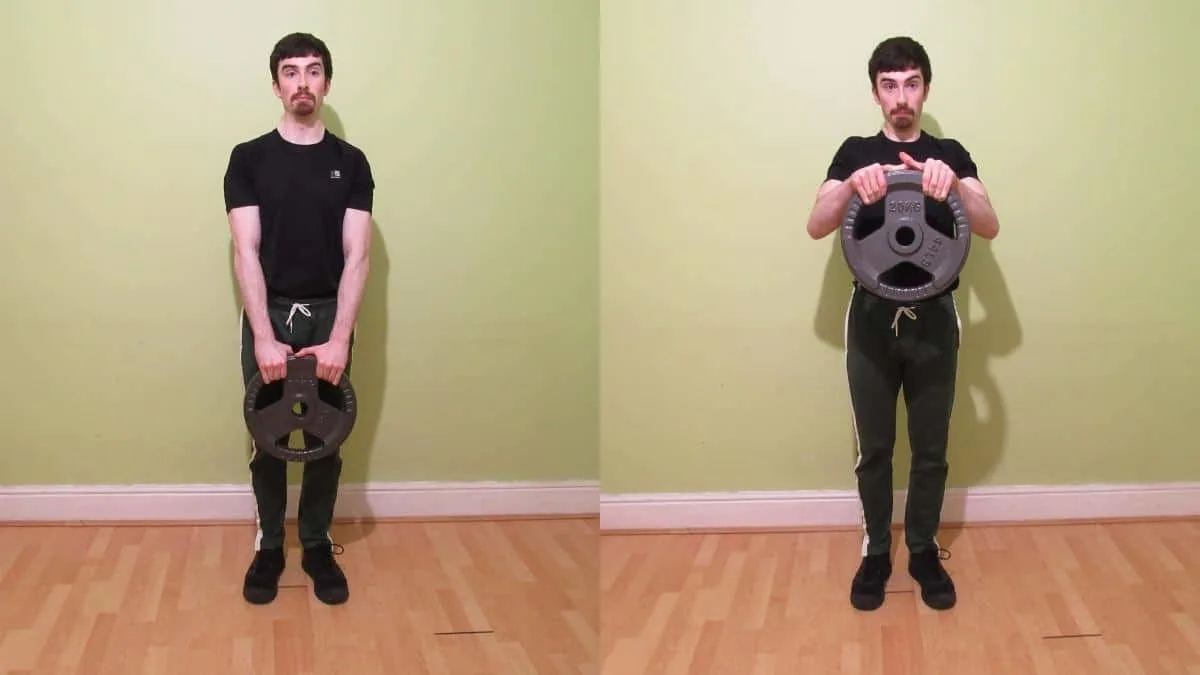Knowing that the main biceps brachii action besides elbow flexion is forearm supination, you can shift the tension away from your biceps and onto your brachioradialis and brachialis by performing the weight plate bicep curl with an overhand grip.
This is because reverse plate curls place the biceps in a weak position where they can’t supply much force during the lifting motion. As a result, your brachioradialis and brachialis have to pick up the slack, which means that they also receive the vast majority of the tension.
Over the next few minutes, you’ll learn how to do reverse bicep curls using a weight plate with the optimal muscle-building form. Then we’ll discuss the main advantages of the exercise and the other variations of the movement that you can do for even better results.
Reverse plate curl exercise details
- Also Known As: Overhand plate curl, pronated plate curl
- Main Muscles: Brachioradialis, brachialis, biceps brachii
- Secondary Muscles: Forearm extensors
- Exercise Type: Strength
- Exercise Mechanics: Isolation
- Difficulty Level: Beginner
- Equipment Needed: Weight disc
How to do reverse plate curls
- Hold a weight plate with a thumbless pronated grip.
- Stand up straight and let the weight disc rest on your thighs.
- Curl the weight plate toward your chest while keeping your elbows still.
- Keep curling until the tops of your forearms make forceful contact with your biceps.
- Hold the contraction for a second and then lower the weight disc under control until your elbows are almost locked out.
- Perform 3-5 sets of 12-25 reps in total.
Weight plate reverse curl advantages
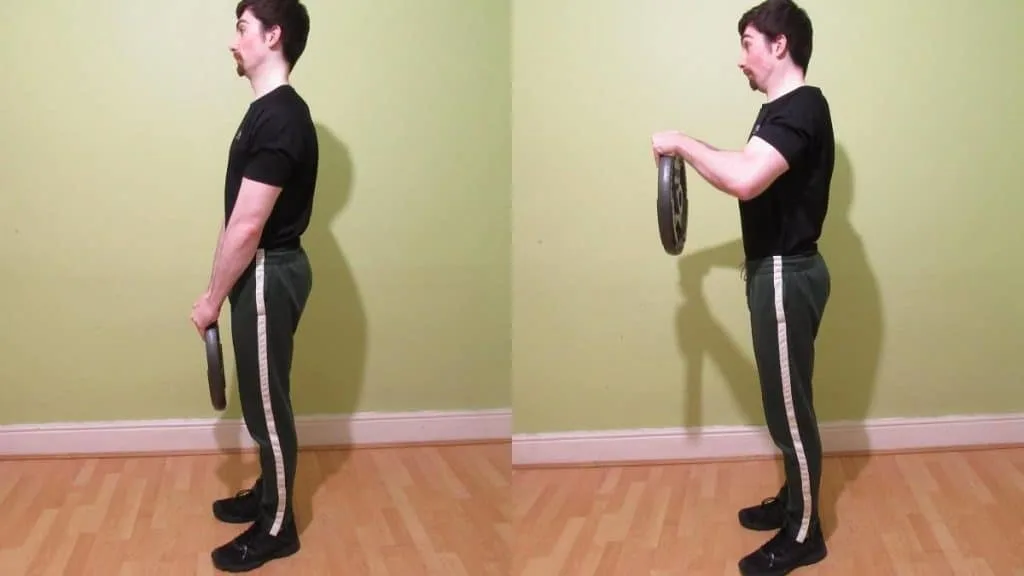
Reverse plate curls are similar to the weight plate hammer curl in that both exercises primarily work the brachialis and brachioradialis muscles. The difference is that the reverse variation—believe it or not—actually allows you to lift heavier weight and thus overloads your arms with more resistance.
Strengthens your grip
The plate reverse curl is a great grip strengthening drill if you use a thumbless grip. This is because by having your fingers and thumbs around the same side of the plate, the weight can’t just rest in your thumbs, which means that your forearm extensors and brachioradialis have to work harder.
Builds the brachialis and brachioradialis
A majority of gym-goers these days already have well-developed biceps. But their brachialis and brachioradialis development is often lackluster in comparison. As such, you can build more proportional arm muscles by performing the reverse grip plate curl because it trains these two muscles very well.
It’s highly convenient
Movements like pronated drag curls are undeniably effective for building muscle. However, since they require weight plates and a barbell, they’re not exactly convenient. This is especially true if you train at home in a tiny space. Reverse plate curls, on the other hand, require only a single weight disc and the smallest amount of workout space imaginable.
Weight plate reverse curl variations
If you read our curls vs reverse curls comparison, then you’ll know that reverse plate curls are a highly effective exercise because they train muscles that standard curls don’t. However, what you may not have realized is that there are actually 3 variations of reverse plate curl that you can perform to grow your arms.
See Also: Hammer curls vs overhand curls
One arm reverse plate curl
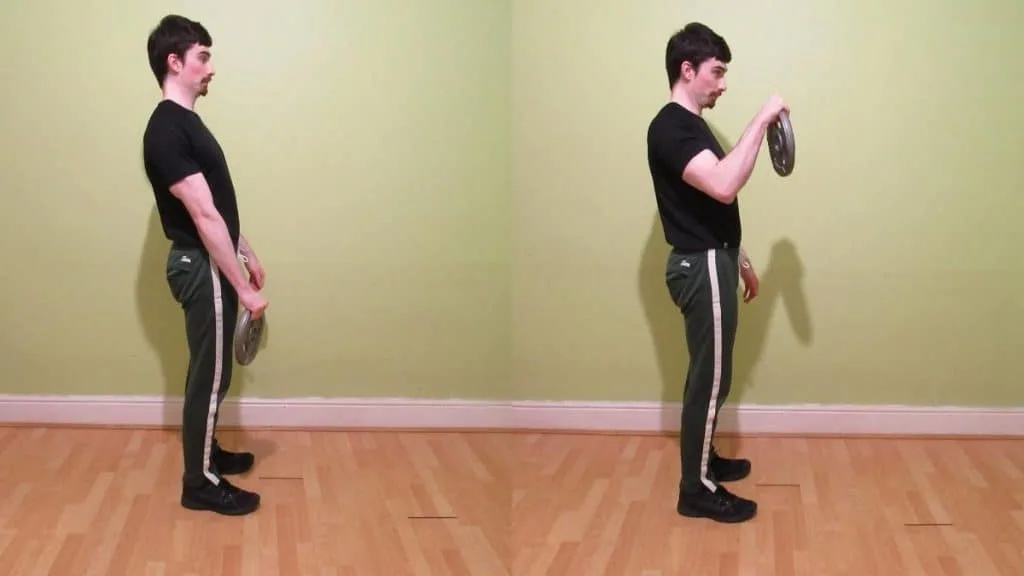
The single arm weight plate reverse curl is a valuable exercise for building symmetrical arms. This is because by training one arm at a time, you can ensure that each side is receiving equal work and thus growing at the same rate.
This is particularly handy if you have a dominant arm that always takes over during bilateral exercises because your stronger arm certainly can’t help your weaker one in this variation.
The main drawback is that your session will take longer because you’re working each arm separately. However, if you only have access to small weight plates, then this movement might be your only option.
Isolateral reverse plate curls
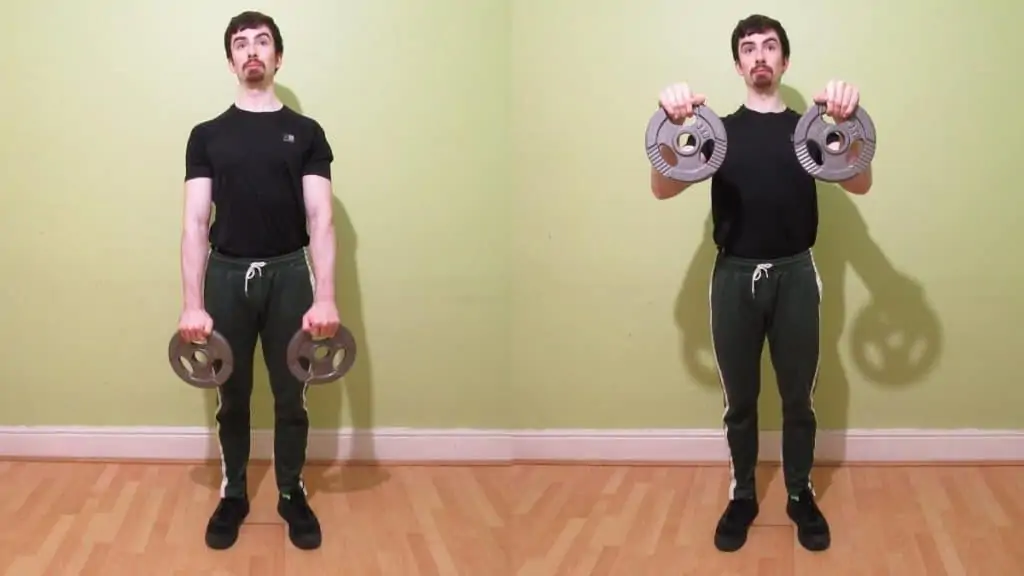
If you want to make sure that each of your arms is getting more or less equal work but don’t want to take the time to train them separately, then the isolateral reverse plate curl is an excellent option for sculpting muscle symmetry.
The only downside is that you need two weight discs. Similarly, holding two weight plates at a time can be awkward if the plates happen to be very large because they might bang into each other.
Thankfully, there’s a solution.
Double plate reverse curl
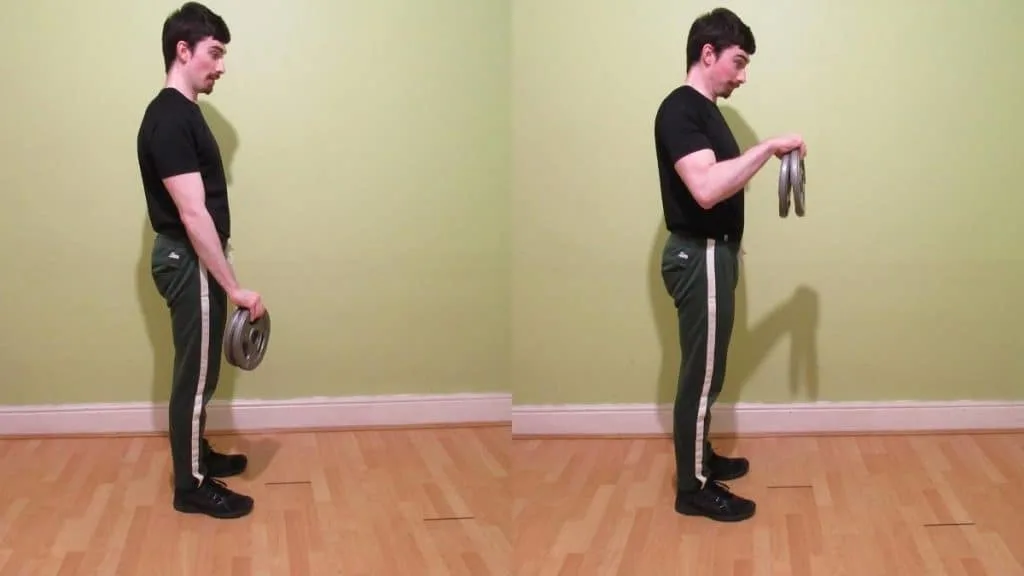
If you can’t comfortably curl a plate in each hand or if you just want to develop a rock–solid grip, then this is the plate reverse curl variation for you.
The form is almost the same as the standard version. The only difference is that you’re gripping two plates together, which places much more tension on the gripping muscles in your forearms.
This exercise makes an excellent progression once you max out the heaviest weight plates that you have access to.
Conclusion
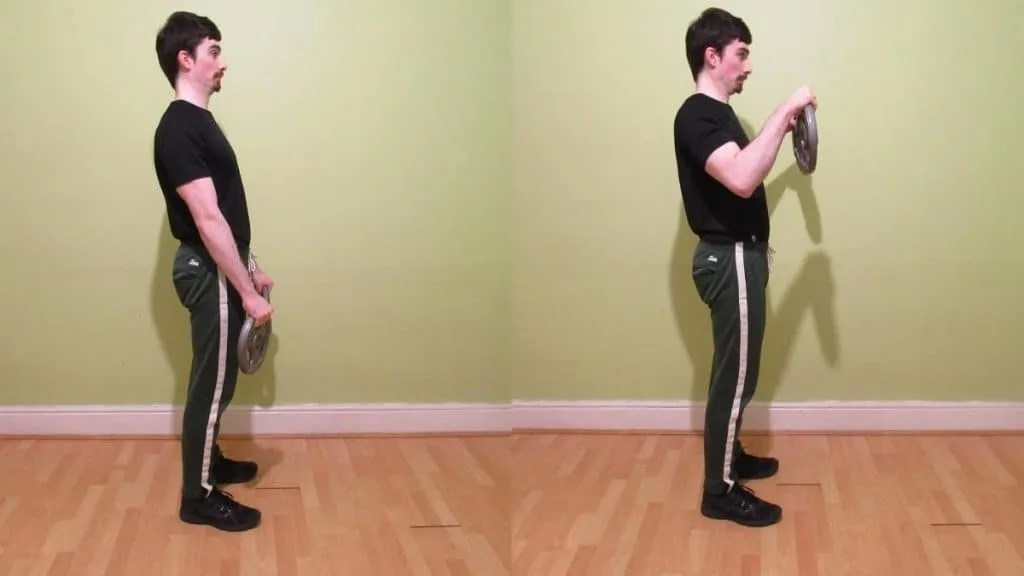
Reverse plate curls are a straightforward but nonetheless highly effective exercise for leveling up your brachioradialis and brachialis development. You can curl two plates at a time to work on your grip, or if you just want to pump up your arms after a heavy session, you can stick with one plate and perform high reps.
The key takeaway to remember is to keep your elbows and shoulders stationary while you curl so that you can place the majority of the tension onto the true target muscles.

